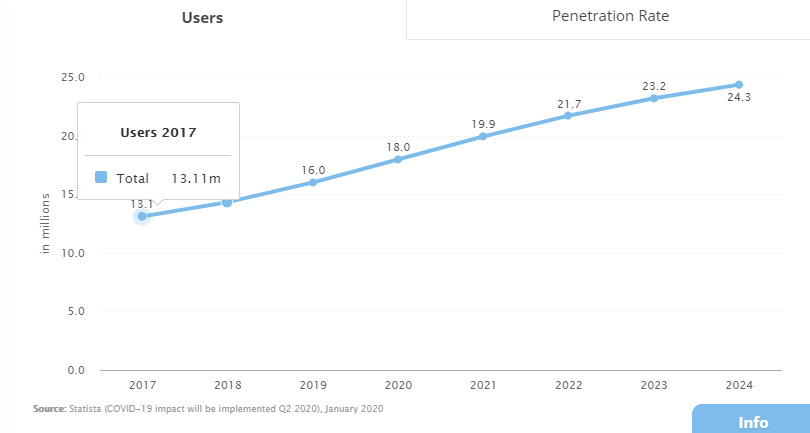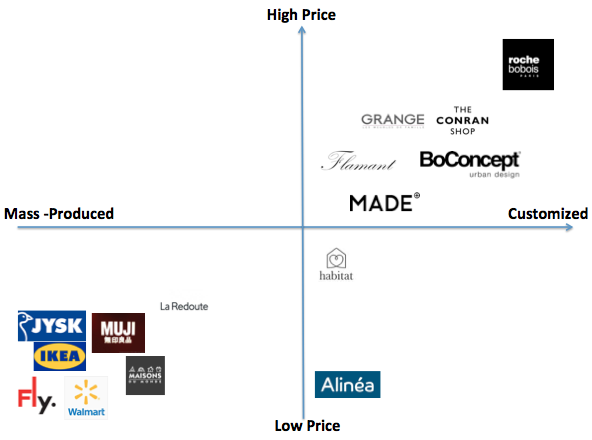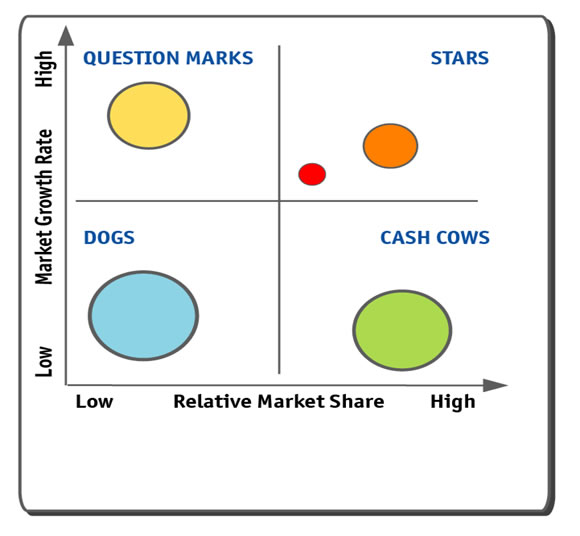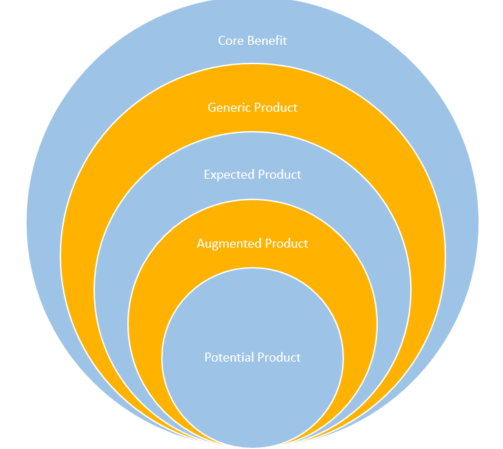1.0 Introduction.........................................................................................................................1
2.0 Macro Drivers.......................................................................................................................2
3.0 Competitive Analysis............................................................................................................4
4.0 Segment analysis..................................................................................................................6
5.0 Marketing Mix......................................................................................................................8
Reference.................................................................................................................................10
1.0 Introduction
IKEA is an international home product company that designs and sells ready-to-assemble furniture appliances and home accessories for the whole world. The Ikea’s name combines the initials of IKEA founder, Ingvar Kamprad (IK) with the first letters from the names of the village, Elmtaryd and Agunnaryd (EA), where he grew up. IKEA’s vision is to create a better everyday life for everybody. In order to attain this vision, IKEA has developed a wide range of well-designed and functional home-furnishing products at an affordable prices so that customers from all income groups can enjoy the Nordic stylish furniture with modern and futuristic design. In 2019, IKEA has opened more than 400 stores operating in 52 countries(IKEA, 2020). It also manages to enjoy a total revenue exceeding USD$45 billion last year. According to the statistics released by the IKEA’s official website, more than 12,000 kinds of products are available in IKEA online stores. 2 billion visitors have paid their visits to the websites. It shows that IKEA has a strong brand reputation and value. As such, it is feasible for IKEA’s B2B marketers to attract B2B business partners and customers in many areas. This market plan is targeting at B2B customers in the U.K market.
Based on the 2017 Statista Global Customer survey, 24 percent of UK consumers have bought furniture and household goods online in the whole year (Statista, 2017). As shown in the figure 1 below, the number of users will continue to grow and expect to reach 24.3 million by the end of 2024. It shows that the furniture market in the U.K will be highly competitive and filled with business opportunities in the near future.

Source credit: Statista, 2017
Fig 1: Trend of user increase in the home furniture market in the U.K from 2017 to 2024
2.0 Macro Drivers
In this section, four macro-environmental drivers will be assessed according to the Likert scale from (-5 to +5) as shown in the table 1 below. The positive and negative signs represent opportunities and threats correspondingly. The absolute value of numbers indicates the magnitude of opportunities or threats.
Table 1: Macro-drivers analysis
Emerging Issues |
Fact |
Implication |
Rating |
Brexit |
Ø U.K is broken up with the E.U Ø It will drive up the import tax of IKEA’s products Ø The labor cost will increase as workers from other EU countries will be barred from entering |
Ø Increase production cost Ø Force IKEA to look for local (U.K) suppliers
|
-3 |
U.K’s furniture market is expanding |
Ø Rapid increase in the customers in the future and homeware furniture market Ø The number of users will reach 24.3 m in the U.K by 2024 |
Ø Opportunities to increase production capacity
|
+5 |
Customer’s preference |
Ø Nordic stylish design is favorable in the target market |
Ø Futuristic and enlightening design Ø Develop brand popularity and loyalty |
+3 |
Smart Home-furnishing |
Ø Smart lighting Ø Human intelligence |
Ø Combined futuristic design with modern technologies Ø Corporate with technological firms that specialize in human intelligence |
+4 |
At the political level, the EU is a unique economic and political partnership between 28 member states that together cover much of the continent. The fundamental purpose of this organization is to promote political and economic harmony among European countries. However, when the U.K exists the EU, it is predictable that many predictable negative outcomes may occur on European companies including IKEA(Cumming &Zahra, 2016). One potential problem is that the cost of importing raw materials from other EU countries to support the production of furniture in the U.K market will increase. Secondly, IKEA cannot access the relatively cheaper labor in EU countries. It has to recruit more British employees in its business. As a consequence, the cost of production will increase very significantly.
Another highlight is the future technological trend. With the rapid technological development, furniture manufacturers and dealers can make home-furnishing more intelligent. Smart lighting, for instance, can allow users to have a remote control on their electronic appliances(Fröding&Lawrence, 2010). In other words, IKEA can potentially cooperate with the high-tech firms to develop the future intelligent furniture market in the U.K.
3.0 Competitive Analysis
3.1 Industrial Trend and market structure
The U.K furniture market distribution is the highest share of non-specialist retailers largely due to the availability of alternative distribution channels including e-Commerce, hypermarkets, department stores, etc, as compared with other EU countries. According to the statistics released by the EU, UK is the second largest home furniture consumer in the Western Europe region. It accounts for 17% of the total furniture consumption in EU. There are many competitors in the furniture market such as IKEA, Bed Bath& Beyond Inc., Wayfair Inc., Dunelm Group PLC, DFS Furniture PLC. In the U.K furniture market, IKEA has the largest market share about 8% but its market position is not secured and unchallengeable(Market Watch, 2019). Wayfair is not catching up very fast with 6% market share in the U.K. It is very ambitious in replacing IKEA’s market position(Market Watch, 2019). There are two very significant industrial trends in the British furniture industry. The first trend is that consumers demand high-quality furniture at affordable prices. The second trend is that consumers demand a variety of design and customized services.
3.2 Competitor Overview
In the competitor overview, IKEA will be closely compared and contrasted with Wayfair (competitor) and Walmart (replacer) as shown in table 2 below. Wayfair and Walmart have been purposely chosen for this comparative analysis. Wayfair is catching up very fast and about taking over the market share from IKEA(Hammond &Shih, 2017). As compared with IKEA, Wayfair does not stick to a unique or specific stylish design. It provides a wide-range of furniture design for customers to choose. Instead of influencing customers with the unique Nordic design, Wayfair products furniture to meet the customer’ expectations and demand instead. Walmart, a gaint American multinational retailer that operates business in hypermarkets, department stores and groceries, is also considering to expand its business in the U.K’s furniture market. In order to compete with existing competitors, Walmart aims to target at price-sensitive customers who do not have strong demand in the design(Roberts &Berg, 2012). They care more about the quality and price. Walmart is the potential replacer largely because it also offers consumers with furniture products at a competitive price. IKEA’s products will thus be significantly challenged and threatend.
Table 2: Competitor analysis
Company |
IKEA |
Wayfair |
Walmart |
Size (Stores in the U.K) |
22 |
10 |
631 |
Market Share |
8% |
6% |
5% |
Business Model |
Chain business |
Company-operated chains |
Department Stores |
Operating Strategy |
Ø Nordic stylish Furniture at affordable price |
Ø Customized Services Ø Variety of designs |
Ø Cheap furniture products |
3.3 Perception Map
As shown in the perception map, it can be observed that IKEA together with Walmart is producing mass-produced furniture products instead of customized ones. They also make their products at a very low price. In other words, customers especially from the low and middle income group can afford IKEA and Walmart’s products. Wayfair and furniture companeis such as MADE and BoConcept, on the other hand, is targeting at the high-end market. Through providing a vast variety of designs and customized furniture products, these companies aim to capture the perceived-value of customer and meet their expectations effectively.

Fig 2: Perception Map
4.0 Segment Analysis
4.1 B2B Market Segmentation
B2B market segmentation is tremendously different from B2C marketing. The latter concentrates more on developing brand awareness and loyalty. B2B marketing, on the contrary, is about communicating the value of the B2B businesses to potential business partners who can further make profits from the cooperation (Hadjikhani & LaPlaca, 2013). It represents an increase in business value. IKEA is interested in all big and small B2B businesses ranging from hospitality industry, educational institutes, residential construction design and office building. Through offering designs, furniture products and solutions, IKEA can help the above-mentioned B2B clients to enjoy an increase in business value. In office building, for instance, employees are the B2C customers of the respective company. IKEA’s furnishing solutions can help enhancing the organizational environment in the workplace and thus enhance employees’ satisfaction in regards to the working environment. As such, the companies will enjoy an increase in productivity from their B2C customers after hiring the B2B services from IKEA(Habibi, Hamilton, Valos&Callaghan, 2015). In the hospitality industry, very similarly, individual, group and business travelers can be highly satisfied while staying in a hotel furnished by IKEA’s design and solution. Respective hotels can make a lot of profits by the increase in number of tourists after cooperating with IKEA in the B2B sector.
4.2 Blue Ocean Strategy
Blue Ocean Strategy is a commonly used marketing tool to avoid price competition among major competitors in a particular industry. The ultimate goal is to artificially create a market that other competing firms cannot easily follow suit. In this way, a company which implements the Blue Ocean Strategy can expand unlimitedly without fierce competition. There are two major parts in the Blue Ocean strategy, including cost reduction and increase in business value (Kim, 2005). From the perception map, it can be observed that the furniture products of IKEA are mass-produced. Due to the large production capacity, it is possible for IKEA to enjoy low production cost with total quality management and lean operation. With low production cost, it can further transfer the benefits in terms of a low price to target customers including both B2C and B2B. in other words, the products, designs and solutions provided by IKEA can be much lower as compared with other major competitors such as Wayfair, Inc. The sophisticated Nordic stylish furnishing will also secure and even increase the business value in the B2B business partnership. B2C customers who are impressed and influenced by IKEA’s products can enjoy both low price and futuristic design.
5.0 Marketing Mix
5.1 Product Strategy
There are generally four stages in the product life-cycle, including introduction, growth, maturity and decline. A company can hardly make a profit at the very early stage of product develop and so does IKEA. However, as compared with other small and medium furniture manufacturers, IKEA is a giant multinational corporation. In other words, it has sufficient fund in investing its early product development process. IKEA’s products are identified to be at the maturity stage. It literally means that IKEA can make tremendous profits from its current products. It does not need to invest too much marketing resources on developing the awareness or brand popularity because the company has already had very strong brand reputation. IKEA’s products have symbolic Nordic design features and can meet the modern tastes of customers about furniture products.
Apart from the product life cycle, it is also important for IKEA’s B2B marketers to understand the product portfolio with the assistance of Boston Matrix as shown in Fig 3(Jugend & da Silva, 2014). It should be noticed that IKEA now has high market share and high market growth. It indicates that IKEA is now doing very well in the furniture market of the U.K. The opportunities for B2B clients to work with IKEA are very high.

Fig 3: Boston Matrix
Furthermore, Kotler’s product level model can be used to understand B2B customer’s demand and expectation about IKEA’s services(Kotler, 2012). As shown in figure 4 below, there are five levels of product in this model. Core benefit is actually the basic benefit or want that a customer may be satisfied when they buy the product. The core benefit in IKEA’s B2B business is just the need of furniture without additional features. Generic product is at the second level. It is a basic version of product that is made up features only for it to function. Hence, apart from producing furniture, IKEA is also producing some simple electric appliances such as lights to its customers. At the third level, expected product shows that customers are actually expecting more features, not just the basic features, in the B2B services. In this sense, apart from the function, the design of furniture is equally important in the B2B partnership. IKEA should make sure that the product are designed in a consistent Nordic style. At the fourth level, augmented product means that customers keep demanding extra features that distinguish IKEA’s B2B services from its competitors. For instance, IKEA should also provide customized solutions to potential B2B clients such as hotel. Potential product, at the last level, is about rending a service that out of customer’s expectation. For instance, IKEA can provide free delivery and discounted installation of furniture services to B2B clients.

Source: Kotler, P. (2012)
Fig 4: Kotler’s product level model
5.2 Pricing
IKEA will continue to take a cost-based pricing strategy by making its products and services more affordable to both B2C and B2B clients. In fact, it is also part of IKEA’s vision to increase the quality of life of its customers. IKEA does not care too much in competing with competitors such as Wayfair even though its products are elegantly and artistically designed. It wants to deliver the Nordic design of furniture to influence more target groups. As such, the price of IKEA’s products and services will remain cheap and affordable. It helps IKEA take a cost leadership in the U.K’s furniture industry. Valipour, Birjandi &Honarbakhsh, 2012).
5.3 Promotion
AIDA B2b promotional marketing strategy can be illustrated in the table below.
Table 3: AIDA B2B promotional marketing strategy
Description |
IKEA can potentially hold press release to inform potential B2B clients about the possible B2B services available such as furniture production, design and customized solutions for hospitality, educational institute, home reconstruction and enterprises (office building refurnishing). Q&A sessions will be held to answer all questions from target audiences.
|
Purpose According to AIDA |
The press release is to get attention from potential B2B clients. The customers are invited through Facebook, Twitter and email. Target audiences can be informed and convinced about the increase in business value after hiring IKEA’s B2B services. |
Target Audiences |
Ø Hospitality Industry Ø Educational Institutes (Institutes usually do not prefer luxurious or extravagant furnishing design) Ø Home reconstruction and consultancy firms Ø Enterprises (that look for enhancing the working and organizational environment for employees) |
Time |
As shown in the Gantt Chart in Table 4, there are four major parts in the B2B promotional marketing strategy (One-year plan) Ø Planning (Apr 20 ~ Jun 20) Ø Press Release (July 20 ~ Sep 20) Ø New launch of products and services (Oct 20 ~ Dec 20) Ø End and collecting feedback (Jan 20 ~ MAR 21) |
Cost |
The total budget for implementing the market plan is about $10,000. Two part-time marketers will be hired to send invitation to target audiences through social media platforms and sending emails. They should also be responsible for maintaining and updating IKEA’s social media accounts occasionally. It will cost about $5,000($2,500 each). $3,000 will be used to rent the conference room for holding press release. No cost will be involved in decorating the conference room because the furniture and samples will be provided by IKEA. Another $2,000 will be kept as risk management fees. |
Table 4: Gantt Chart